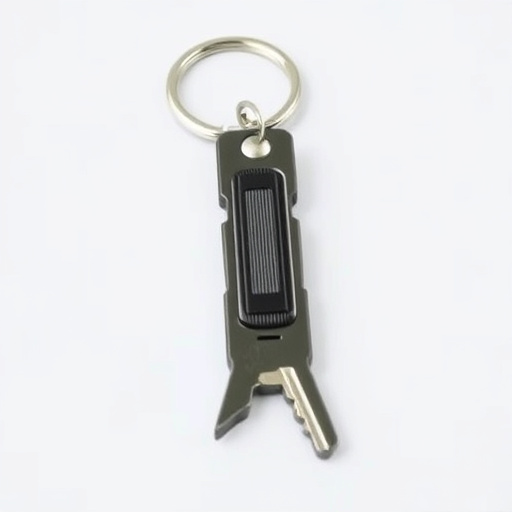Self-defense keychains with quick release mechanisms offer individuals a compact and accessible way to enhance personal safety, but their legality varies across jurisdictions. Understanding local Legal Self-Defense Keychain Regulations is crucial for responsible ownership. These regulations govern the sale, possession, and use of self-defense tools, including keychains, with restrictions on force deployment. Adhering to legal frameworks ensures users can protect themselves while avoiding legal repercussions. When selecting a keychain safety device, consider design, functionality, build quality, and compliance with regional laws for reliable performance in an emergency.
“Unleash your personal safety with the revolutionary keychain safety device (KSD) quick release mechanism. This comprehensive guide explores the evolving landscape of self-defense keychains, delving into their mechanics and legal aspects. From understanding the devices’ functionality to navigating regulatory landscapes, we uncover how these compact tools can enhance your self-defense capabilities.
Key topics include legal considerations on self-defense keychains, market insights, and expert advice on selecting the best device for optimal safety.”
- Understanding Keychain Safety Devices: A Comprehensive Overview
- Quick Release Mechanisms: Enhancing Self-Defense Capabilities
- Legal Considerations: Regulations and Restrictions on Self-Defense Keychains
- Market Analysis: Popular Models and Their Unique Features
- Choosing the Right Device: Factors to Consider for Optimal Safety
Understanding Keychain Safety Devices: A Comprehensive Overview
Keychain safety devices equipped with quick release mechanisms are designed to provide users with a swift and secure solution for self-defense in various situations. These compact tools have gained popularity due to their accessibility and potential to deter potential threats. Understanding the functionality and regulations surrounding these devices is essential, especially when considering their role in legal self-defense.
The primary purpose of a keychain safety device is to offer a quick way to disarm an assailant by releasing a sharp object or blade. The quick release mechanism allows users to react swiftly during emergencies, making it a valuable tool for personal safety. However, regulations regarding such devices vary across jurisdictions, with some areas having specific legal self-defense keychain regulations in place. It’s crucial to be aware of these laws to ensure responsible and legal use.
Quick Release Mechanisms: Enhancing Self-Defense Capabilities
Quick Release Mechanisms play a pivotal role in enhancing self-defense capabilities for individuals carrying keychains designed with safety in mind. These mechanisms allow users to swiftly and easily separate the keychain from their belongings, providing a crucial split second during high-pressure situations. By enabling rapid access to a potential defense tool, they empower individuals to protect themselves legally and effectively, aligning with regulations governing legal self-defense keychain devices.
In many regions, laws surrounding self-defense require individuals to act in reasonable manner, and having a quick-release keychain can demonstrate proactive preparedness. This feature ensures that help or intervention can be sought promptly if needed, without compromising an individual’s ability to defend themselves in the interim. Staying informed about local Legal Self Defense Keychain Regulations is essential for responsible ownership and usage.
Legal Considerations: Regulations and Restrictions on Self-Defense Keychains
The legal considerations surrounding self-defense keychains are an essential aspect that potential buyers often overlook. While these compact devices offer added peace of mind and a quick release mechanism for emergency situations, they also fall under various regulations and restrictions. Each country and region has its own set of laws governing self-defense tools, including keychains designed for personal safety.
In many jurisdictions, the sale and possession of self-defense keychains are strictly regulated to ensure public safety. Some regions may permit these devices only with a valid permit or license, while others might have restrictions on the type of force they can deploy. It’s crucial to understand that using a keychain for self-defense could invite legal repercussions if it violates local regulations. Therefore, individuals considering purchasing such a device should research and comply with their area’s legal framework regarding self-defense tools to avoid any potential legal complications.
Market Analysis: Popular Models and Their Unique Features
In the market for self-defense keychains, there’s a surprising variety of models to choose from, each boasting unique safety features and design innovations. From tactical flashlights integrated into the keychain to sharp blades concealed within sleek metal casings, these devices cater to diverse needs. Some even incorporate GPS tracking or alarm systems, offering not just protection but peace of mind.
Popular choices often come with legally compliant self-defense capabilities, ensuring they meet regional regulations on self-defense tools. This market analysis highlights the evolving landscape where innovation meets necessity. Keychain safety devices are no longer one-size-fits-all; instead, they’re tailored to specific user preferences and legal frameworks, making them accessible and effective for personal safety without compromising legality.
Choosing the Right Device: Factors to Consider for Optimal Safety
When selecting a keychain safety device with a quick release mechanism, several factors come into play to ensure optimal safety and compliance with legal self-defense regulations. One crucial aspect is understanding your local laws regarding self-defense tools, as different regions have varying restrictions on the types and sizes of defensive devices allowed. For instance, some areas may permit only certain types of keychains designed for personal safety, while others might have more lenient rules.
Additionally, consider the design and functionality of the device. A reliable quick release mechanism should be easily accessible yet secure to prevent accidental deployment. The build quality, materials used, and overall durability are essential factors to ensure the device can withstand regular use and potential stress during an emergency.
In conclusion, keychain safety devices with quick release mechanisms offer individuals a powerful tool for self-defense, combining portability and accessibility. Understanding the legal landscape surrounding these devices is crucial, as regulations vary globally. By considering factors like reliability, ease of use, and compatibility with one’s needs, users can select an optimal device that enhances their safety without compromising legality. Staying informed about local laws regarding self-defense keychains is essential to ensure a peaceful and secure experience.
